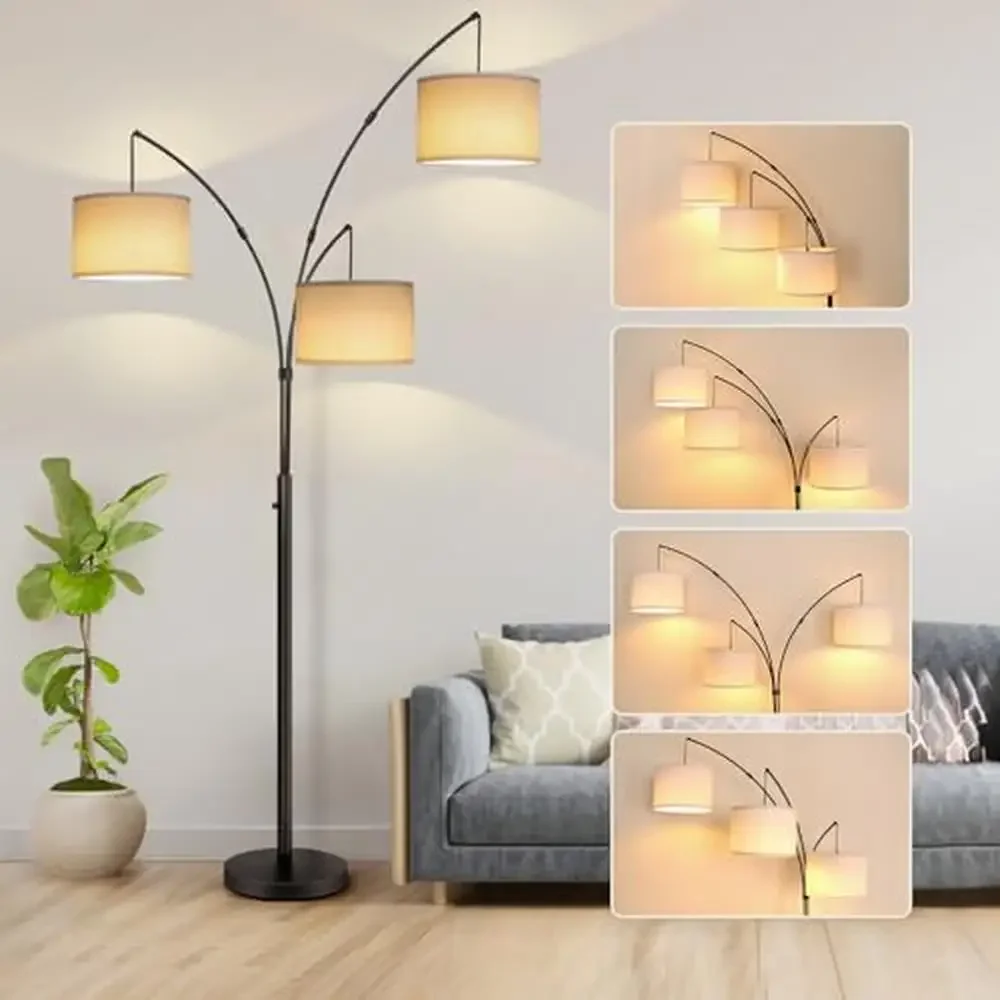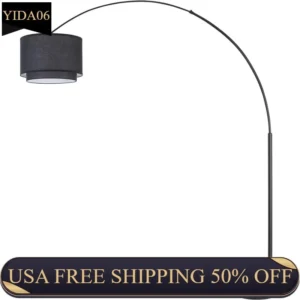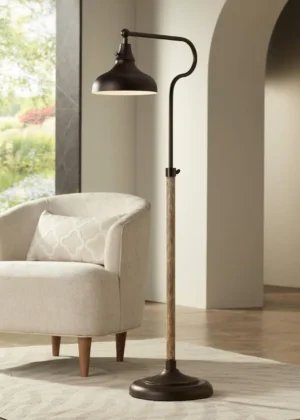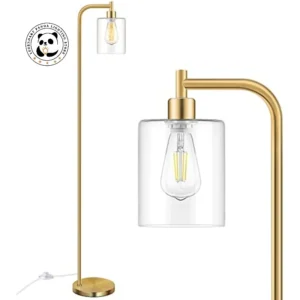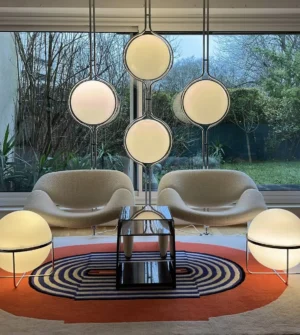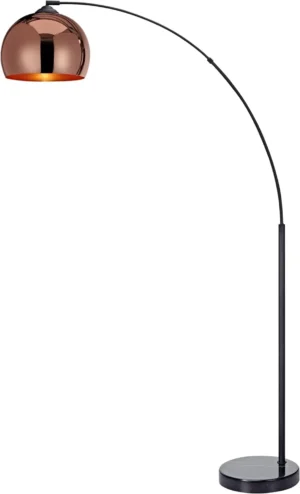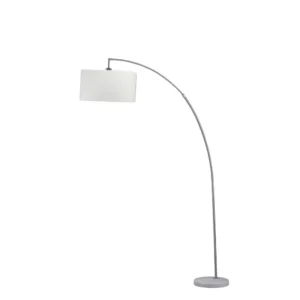Understanding the Importance of Cord Concealment in Interior Design
A beautifully designed room with carefully chosen furniture, artwork, and lighting can be immediately undermined by one simple detail: exposed lamp cords. These trailing wires create visual clutter that disrupts the clean lines and intentional aesthetics you’ve worked so hard to achieve. Proper cord management isn’t merely about appearances—it serves multiple essential purposes in creating a harmonious living environment.
Thoughtful cord concealment contributes significantly to both the visual appeal and practical functionality of your space. When cords are neatly tucked away, rooms appear more spacious, organized, and intentionally designed. The eye flows naturally through the space instead of getting caught on distracting wire tangles.
Beyond aesthetics, proper cord management provides important safety benefits:
- Reduces tripping hazards (over 1,000 emergency room visits annually are attributed to falls involving electrical cords)
- Prevents damage to the cords themselves from foot traffic or furniture movement
- Minimizes dust collection around exposed wires
- Reduces risks for pets and children who might chew on accessible cords
At Interior Ivy, we believe that truly exceptional lighting design extends beyond the lamp itself to encompass every aspect of how it integrates into your space—including how choosing perfect arc floor lamps influences cord management possibilities. When cords become an intentional part of your design strategy rather than an afterthought, the entire room achieves a higher level of sophistication and cohesion.
Evaluating Your Space Before Implementation
Before diving into cord concealment solutions, taking time to thoroughly assess your space will ensure more effective and lasting results. This planning phase helps identify the most appropriate techniques for your specific situation.
Room Layout Assessment Checklist:
- Map all available power outlets in relation to desired lamp placements
- Identify natural pathways where cords could be discreetly routed (along baseboards, behind furniture)
- Note architectural elements that could help conceal cords (crown molding, built-ins)
- Consider furniture placement—could slight adjustments minimize cord visibility?
- Evaluate room traffic patterns to ensure cord solutions won’t create hazards
- Measure the exact distance between power sources and lamp positions
- Account for specific cord characteristics (length, thickness, color, flexibility)
- Determine whether your situation calls for temporary solutions or more permanent installations
Take time to consider whether your lamps themselves might be contributing to cord management challenges. The design and functionality of arc lamp cable management tips can vary significantly based on the lamp type. For instance, the positioning flexibility offered by adjustable arc floor lamps creates unique cord routing considerations that must be factored into your plan.
By thoroughly analyzing your space before implementation, you’ll identify opportunities and constraints that might have been overlooked, leading to more elegant and effective cord management solutions tailored specifically to your environment.
Behind-the-Scenes Techniques: Structural Solutions
When seeking the most seamless cord integration, structural solutions provide the most invisible results. These techniques incorporate cord management directly into the architectural elements of your space for a truly polished look.
Wall-Based Solutions
Cord channels: These paintable plastic tracks adhere to walls and baseboards, creating a dedicated pathway for cords.
* Measure and cut the channel to required length
* Clean the wall surface thoroughly
* Apply adhesive backing or mounting screws
* Snap cords into the channel
* Paint to match your wall color for near-invisibilityBehind-baseboard routing: For more permanent installations, cords can be routed behind baseboards.
* Carefully remove existing baseboards
* Create a shallow channel in the drywall
* Run cords through the channel
* Reinstall baseboards (consider professional help for this method)
Furniture Integration Approaches
Strategic furniture placement and modification can effectively eliminate cord visibility:
- Drill small access holes in the backs of furniture pieces to route cords internally
- Position bookcases or cabinets to create natural cord pathways
- Use furniture with built-in cord management features
- Place console tables against walls where cords run to create a visual barrier
For lamps with darker finishes, black arc floor lamps often come with matching black cords that can be more easily concealed against dark furniture or in shadowed areas, making strategic placement even more effective.
Floor-Based Solutions
- Flat cord covers: These adhere directly to the floor and can be painted or stained to blend with flooring
- Under-rug routing with specialized flat cord protectors (ensure these are designed specifically for this purpose to prevent fire hazards)
- Strategic furniture placement over cord pathways
- Floor cord channels that integrate with hardwood or laminate flooring
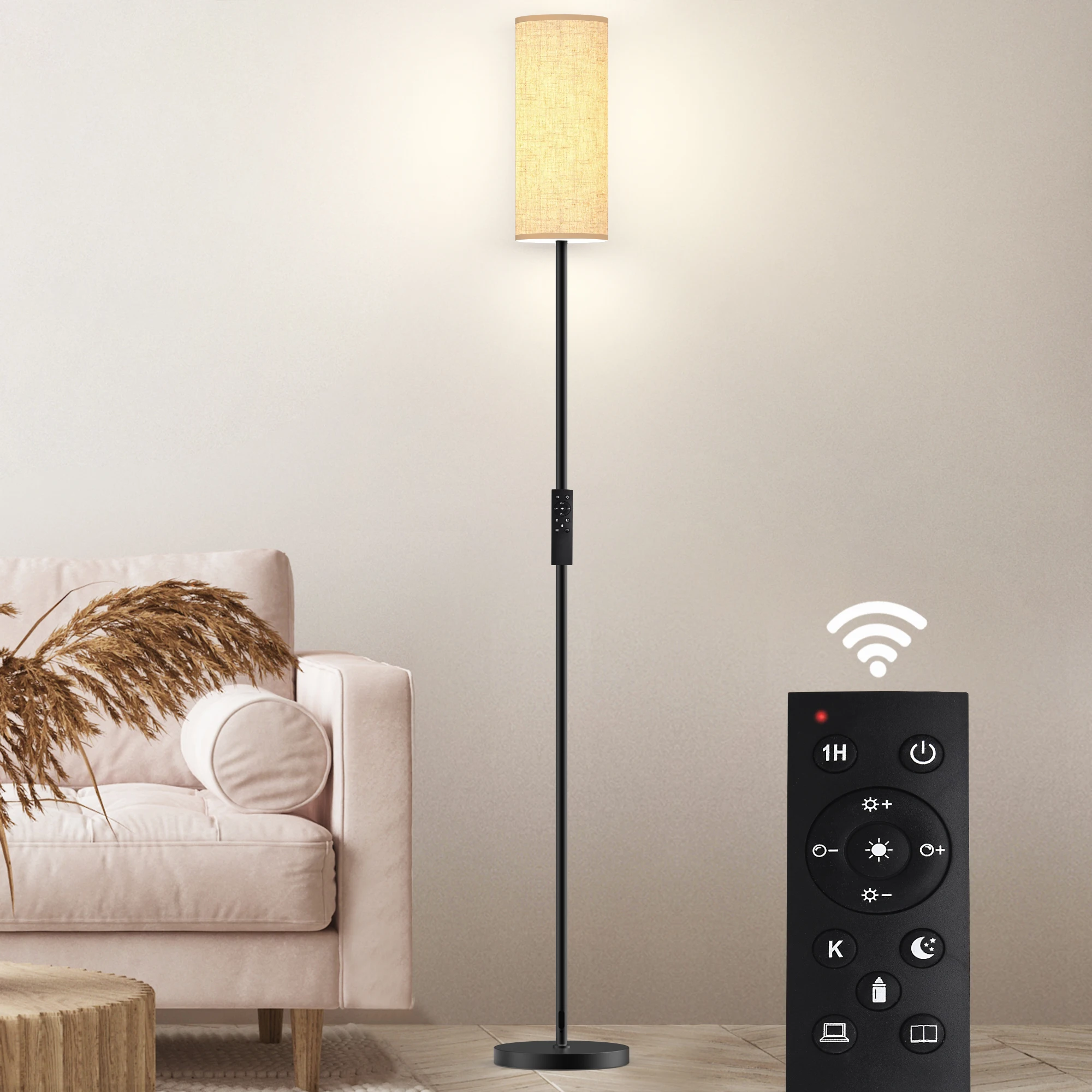
Decorative Concealment: Making Cords Part of Your Design
Rather than viewing lamp cords as elements to hide, consider transforming them into intentional design features that complement your interior aesthetic. This approach embraces cords as decorative opportunities rather than eyesores.
Cord Wrapping Techniques
Transform ordinary lamp cords into attractive design elements:
* Rope wrapping for nautical or rustic interiors
* Colorful thread wrapping for bohemian or eclectic spaces
* Fabric cord covers in complementary patterns or textures
* Metallic wire wrapping for industrial or contemporary designs
Coordinating Cord Colors
Strategic color choices can make cords virtually disappear:
* Match cord covers to wall colors for seamless blending
* Choose contrasting colors to create intentional visual interest
* Use ombré or gradient wrapping to transition between different colored surfaces
* Consider seasonal cord covers to refresh your design throughout the year
Incorporating Cords into Decor
Turn necessity into opportunity by making cords part of your decorative elements:
* Guide cords to form geometric patterns on walls
* Frame cords with decorative molding to create architectural interest
* Use decorative hooks or clips that enhance your design aesthetic
* Create cord “art installations” with intentional routing patterns
Successfully harmonizing arc lamps with interior design includes considering how their cords interact with your overall design scheme. When cords become intentional design elements rather than afterthoughts, they contribute to rather than detract from your space’s visual harmony.
Product Solutions: Tools and Materials for Effective Cord Management
The right products can dramatically simplify lamp cord management while maintaining your design aesthetic. Here’s a guide to the most effective tools and materials for various situations.
Cord Cover Comparison
| Type | Best For | Pros | Cons |
|---|---|---|---|
| Paintable Cord Channels | Wall routing | Seamless blending, durable | Permanent adhesive, more visible |
| Fabric Cord Sleeves | Exposed cords | Decorative, easy to install | Limited protection, dust collection |
| Floor Cord Covers | High-traffic areas | Safety, durability | More noticeable, limited flexibility |
| Cable Management Boxes | Multiple cords/power strips | Complete concealment, organization | Requires space, limited access |
| Cord Clips/Command Hooks | Precise routing | Affordable, adjustable | Individual placement needed, adhesive issues |
Specialized Furniture and Accessories
Several products are designed specifically to address cord management challenges:
- End tables and nightstands with built-in cord routing channels
- Floating shelves with hidden cable management systems
- Media consoles with integrated power management
- Decorative boxes and baskets designed specifically for cord concealment
- Furniture with built-in USB ports and power outlets
Arc floor lamps with integrated cord management features are increasingly available, offering elegant solutions built directly into the lamp design. These thoughtfully designed pieces eliminate many common cord challenges from the outset.
Technological Solutions
Advancements in technology continue to expand cord management possibilities:
- Wireless charging pads integrated into furniture
- Battery-powered lamps for temporary or flexible lighting
- Smart home systems allowing strategic outlet control
- Cord-shortening devices to manage excess length
- UV-resistant cord covers for areas exposed to sunlight
When selecting products, prioritize quality materials that will maintain their appearance and functionality over time, particularly for solutions that will be visible or frequently handled.
Contemporary Arc Floor Lamp, Large Arc Floor Lamp, Oversized Arched Floor Lamp
$460.63 Select options This product has multiple variants. The options may be chosen on the product pageAdjustable Arc Floor Lamp, Bronze Arc Floor Lamp
Price range: $440.95 through $558.52 Select options This product has multiple variants. The options may be chosen on the product pageBrass Arc Floor Lamp, Contemporary Arc Floor Lamp, LED Arc Floor Lamp
Price range: $490.72 through $522.04 Select options This product has multiple variants. The options may be chosen on the product pageChrome Arc Floor Lamp, LED Arc Floor Lamp
Price range: $304.95 through $1,210.40 Select options This product has multiple variants. The options may be chosen on the product pageContemporary Arc Floor Lamp, Large Arc Floor Lamp, Marble Base Arc Floor Lamp
$224.94 Select options This product has multiple variants. The options may be chosen on the product pageContemporary Arc Floor Lamp, Silver Arc Floor Lamp
$459.99 Select options This product has multiple variants. The options may be chosen on the product page
Type-Specific Solutions for Different Lamps
Different lamp styles present unique cord management challenges and opportunities. Here’s how to address the specific needs of each lamp type.
Floor Lamp Solutions
- Arc Floor Lamps: These dramatic statement pieces require special attention due to their curved design and height.
- Route cords along the inside curve of the arch for minimal visibility
- Use clear cord clips that blend with the lamp’s metal finish
Consider complete guide to arc floor lamp cord management techniques specific to these distinctive fixtures
Torchiere Lamps: The upward-facing light makes cords more visible.
- Position against walls whenever possible
- Use cord channels that match your wall color
Consider cord covers in metallic finishes that complement the lamp base
Traditional Floor Lamps: Their straight design offers simpler cord management.
- Route cords straight down to the floor and along baseboards
- Use furniture to create natural barriers hiding the cord path
- Consider cord wraps that match the lamp’s finish
Table and Desk Lamp Considerations
- Prioritize accessibility for lamps that need frequent adjustment
- Route cords through desk grommets when available
- Use cord clips to secure wires to the back edges of furniture
- Consider cord shortening solutions for excess length
- Group cords together when multiple devices share a workspace
LED arc floor lamps often feature thinner, more flexible cords that can be easier to manage, but may require different concealment approaches than traditional lamp cords.
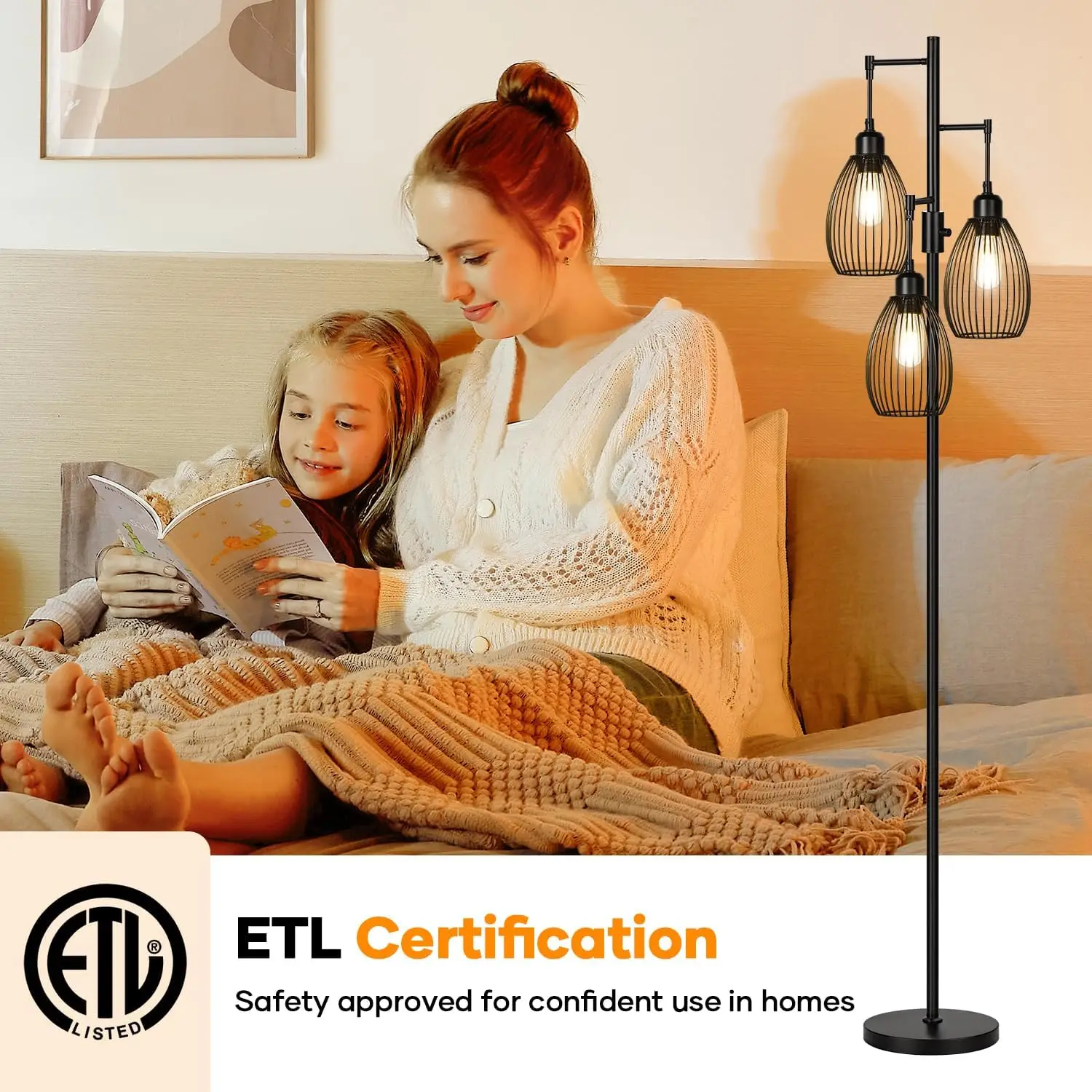
Room-by-Room Strategies: Contextual Approaches
Each room in your home serves a different purpose and presents unique cord management considerations. Tailoring your approach to the specific context ensures optimal results.
Living Room Solutions
The living room often contains multiple light sources and high visibility:
* Create lighting zones with strategically placed floor outlets to minimize cord travel
* Use rugs and furniture placement to define cord pathways
* Incorporate cord management into entertainment center design
* Consider decorative cord covers that complement your design aesthetic
* Prioritize safety in high-traffic areas with secure cord fastening
Bedroom Approaches
Bedrooms benefit from clean, calm visual lines:
* Route bedside lamp cords behind nightstands
* Use cord clips to secure wires to furniture backs
* Consider headboards with built-in lighting to eliminate some cords entirely
* Implement under-bed cord routing for floor lamps
* Use cord covers in calming colors that promote restful aesthetics
Home Office Strategies
Productivity spaces require accessible but organized cord management:
* Use desk grommets and built-in cable management systems
* Implement cord labels for easy identification
* Group similar cords together with color-coded organizers
* Position furniture to create dedicated cord pathways
* Consider floor outlet installation for desk-center placement
Contemporary arc floor lamps often feature sleek, minimalist designs that work particularly well in modern living spaces when paired with equally streamlined cord management solutions.
DIY Cord Concealment Projects: Step-by-Step Guides
Create custom cord management solutions with these accessible DIY projects that combine functionality with personal style.
Custom Fabric Cord Cover
Materials:
* Fabric in your choice of pattern/color (cotton works well)
* Sewing machine or fabric glue
* Measuring tape
* Scissors
* Velcro strips (optional)
Steps:
1. Measure your lamp cord’s length and diameter
2. Cut fabric to width 3x the cord diameter and length plus 1 inch
3. Fold fabric in half lengthwise, right sides together
4. Sew or glue along the long edge, creating a tube
5. Turn right-side out and iron flat
6. Thread the cord through the fabric sleeve
7. Add velcro closures if needed for easy removal
Simple Cord Concealment Box
Materials:
* Decorative box with lid (wooden or cardboard)
* Utility knife or scissors
* Sandpaper (if using wood)
* Paint or decorative paper (optional)
* Ruler
Steps:
1. Measure your power strip or cord bundle
2. Select a box that comfortably fits these items
3. Mark spots for cord entry/exit points
4. Cut small notches in the back of the box
5. Sand any rough edges if using wood
6. Decorate box if desired to match your decor
7. Place power strip inside with cords routed through notches
8. Position the box strategically near your lamp base
Decorative Cord Wall Clips
Materials:
* Wooden clothespins
* Acrylic paint or wood stain
* Small decorative elements (optional)
* Command strips or small nails
* Paintbrush
Steps:
1. Clean clothespins to remove any residue
2. Paint or stain to match your decor
3. Add optional decorative elements like washi tape patterns
4. Allow to dry completely
5. Attach command strips to the back of each clothespin
6. Position along your planned cord route
7. Clip cords securely in place
When looking for the perfect arc floor lamp, consider how its cord design might work with these DIY solutions to create a fully integrated look.
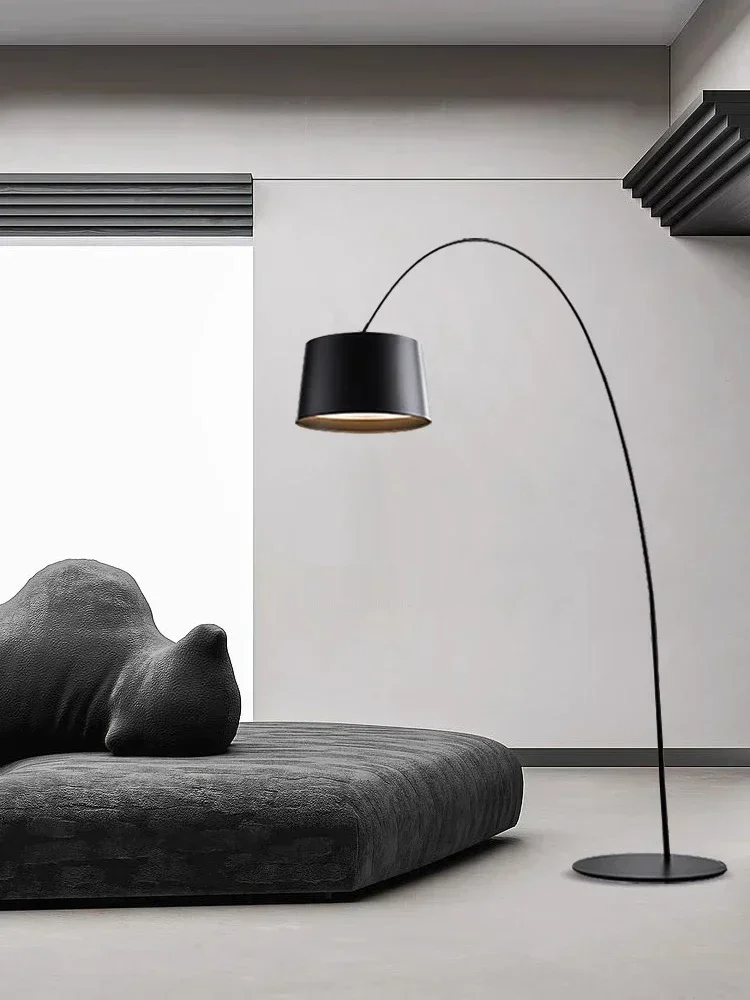
Professional Integration: When to Seek Expert Help
While many cord concealment solutions can be implemented as DIY projects, certain situations warrant professional assistance to ensure safety and optimal results.
When to Call a Professional:
- You need to install new outlets to better position lamps
- Cord management requires modifications to walls, floors, or ceilings
- You’re unsure about electrical load capacity for multiple lamps
- Implementation involves hardwiring fixtures directly
- You’re working with historic buildings with special considerations
- Projects require compliance with specific building codes
- You’re integrating complex smart home systems with lighting
Questions to Ask When Hiring Professionals:
- What experience do you have with decorative lighting installation?
- Are you familiar with code requirements for lighting in my area?
- Can you provide photos of previous cord concealment projects?
- What solutions do you recommend for my specific situation?
- Will your work require repairs to walls or other surfaces?
- What warranties do you offer on installation work?
Dimmable arc floor lamps often have additional wiring considerations that may benefit from professional guidance to ensure proper functionality and safe installation, particularly when integrating with smart home systems.
Troubleshooting Common Cord Concealment Challenges
Even with careful planning, cord management can present unexpected challenges. Here are solutions to the most common issues you might encounter.
Q: My adhesive cord clips keep falling off the wall. What should I do?
A: First, thoroughly clean the wall surface with alcohol to remove any dust or residue. Let it dry completely before applying new clips. For heavier cords, consider using stronger mounting solutions like screw-in clips or cord channels with multiple attachment points.
Q: My lamp cord is much longer than needed. How can I manage the excess?
A: Never cut lamp cords to shorten them, as this creates safety hazards. Instead, use cord winders to neatly bundle excess length, or create a decorative coil secured with clear zip ties. Cord shortening devices are also available that safely store excess cord length.
Q: How can I manage multiple cords that run in the same direction?
A: Group cords together using spiral cable wrap or fabric sleeves designed for multiple cords. Color-code different cords with washi tape or colored zip ties for easy identification. Consider a cable management box where cords converge near power sources.
Q: My pet keeps chewing on lamp cords. How can I protect them?
A: Use cord protector tubes made of pet-resistant materials, or spray cords with pet deterrent (ensure it’s safe for electrical cords). Route cords completely out of reach when possible, and provide appropriate chew toys as alternatives.
Q: How do I manage cords for lamps positioned far from outlets?
A: Consider rearranging furniture to reduce the distance, using flat extension cord covers that blend with flooring, or installing new outlets if the current placement creates unavoidable cord visibility.
Maintenance and Adaptation of Cord Management Systems
Effective cord management isn’t a one-time project but an ongoing system that requires periodic attention and adaptation as your needs change.
Regular Maintenance Checklist:
- Inspect cords monthly for signs of wear, fraying, or damage
- Check that cord covers remain securely attached to surfaces
- Clean accumulated dust from cord management systems
- Verify that furniture hasn’t shifted to expose previously hidden cords
- Ensure heat-producing lamps have cords positioned away from flammable materials
- Test any cord clips or fasteners for secure attachment
- Examine outlet areas for signs of overloading or heat
Adapting Your System:
As your space evolves, so should your cord management approach. Consider these adaptation strategies:
- Keep extra cord management supplies on hand for quick adjustments
- When rearranging furniture, plan new cord routes before moving pieces
- Seasonally reassess lighting needs as natural light patterns change
- Update cord covers or decorative elements to refresh your design
- Replace temporary solutions with more permanent ones over time as you determine optimal lamp placements
By viewing cord management as an evolving system rather than a fixed installation, you’ll maintain both the aesthetic and safety benefits of your careful planning.
Future-Proofing Your Space: Evolving Technologies in Cord Management
The landscape of lighting and cord management continues to evolve rapidly, offering exciting possibilities for increasingly seamless integration.
Emerging Trends and Technologies:
- Wireless power transmission technology enabling truly cordless lamps
- Furniture with integrated power systems eliminating the need for visible cords
- Ultra-thin, flexible batteries that can be incorporated into lamp bases
- Smart home systems with centralized lighting control reducing cord requirements
- Decorative conductive materials that double as power transmission and design elements
- Solar-powered indoor lighting reducing dependency on electrical outlets
- Flexible, printable circuits that can be incorporated into decorative elements
As you invest in new lighting pieces, consider how these emerging technologies might influence your long-term cord management strategy. While some solutions may require initial investment, they often provide superior aesthetics and functionality over time.
By staying informed about evolving options and implementing flexible solutions now, you position your space to easily adapt to future technological advancements—ensuring your carefully designed interiors remain both beautiful and functional for years to come.

